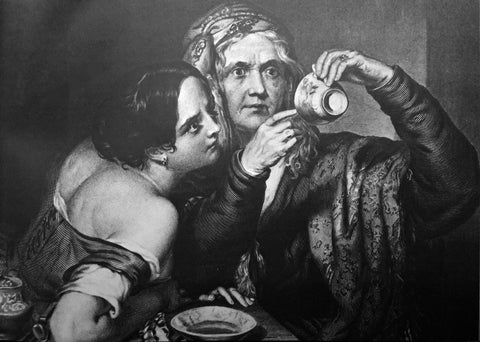Are you looking for a unique way to help you further explore the art of divination? Tasseography, also known as tea leaf reading, may be just what you need. This ancient practice has been around for thousands of years and was originally used as a form of divination in China. Over time, it spread to other parts of the world, where it gained popularity as a form of entertainment.
Tasseography Explained
The concept is simple – all you need is a cup of loose-leaf tea or coffee grounds, and an open mind. Brew your tea or coffee and drink it, focusing on a question or intention you’d like to gain insight into. Once you've finished, leave the leaves or grounds in the bottom of the cup. Then, carefully turn the cup upside down onto a saucer and let any remaining liquid drain away. Take a close look at the patterns and shapes formed by the leaves or grounds and try to interpret any symbols or images that you see.
How to Interpret Patterns or Symbols in the Leaves or Grounds
While there are no set rules for interpreting the patterns, there are some common shapes and their meanings to consider. For example, apples may symbolize long life, success in school or business, or abundance in health or finances. Butterflies may represent transformation, while moons can signify happiness and success. Knives may indicate danger or a need for caution, and axes may symbolize hard work and perseverance. Axes can also mean that you're about to achieve something significant.
Since tasseography is so widespread, do note how different cultures have different interpretations of the symbols and shapes. For example, in Turkish culture, an image of a fish can be a sign of good luck, while in Western culture, it can be a sign of deception. So, I find it's best to go off intuition to decipher the signs in correspondence with your question as everyone has his/her/their own interpretations of certain symbols! There is a lot of subjectivity in tasseography, which is also what makes it so fun and accessible!

Cleas an ćopáin - Cup tossing, 1842 engraving by Nicholas Joseph Crowley
Cup Placement
Placement of the leaves or grounds within the cup can also assist in gathering further information especially in relation to timing related question. Once again due to the subjectivity of the tasseography this can be done many different ways so it's best to try them all out and see which way resonates best for you!
One way to interpret the placement of the sediments which I find the easiest to follow goes like this:
- Near the rim of the cup: Events that are closer in time, usually within the next few weeks or months.
- Middle of the cup: Events that are further away in time, usually within the next year.
- Bottom of the cup: Events that are very far away in time, usually within the next few years or even beyond.
- Left side of the cup: Events related to the past or things that are holding you back.
- Right side of the cup: Events related to the future or things that are coming your way.
- Center of the cup: Events that are currently happening or that will have a strong impact on your life.
But note that this is just one way and that there may be other techniques that feel more natural to you!
Left Hand or Right Hand?
Some practitioners of tasseography prefer to hold the cup with the non-dominant hand while drinking. It is believed to enhance the psychic connection with the symbols left by the leaves. Others believe that the direction in which the handle of the cup is facing can also have significance in the reading. But do what feels right for you!
Not Just for Coffee or Tea
Tasseography is not limited to tea and coffee, but can also be done with wine sediment, melted chocolate, and even candle wax. Also, how fun would it be to have a tasseography wine tasting with a group of special friends or family members?
Tasseography is Really an Intuitive Practice
That's Right! Notice the degree of subjectivity and personal interpretation that is present in this practice? While certain elements of tasseography carry through no matter how you practice it, most parameters or rules you can tailor to fit what feels the most authentic.
Ultimately tasseography is a practice that can help us get closer to our intuition, and it could be a valuable tool to add to your practice especially if you are trying to strengthen or build a closer connection to your inner voice, as most of tasseography is about following those initial thoughts or feelings when interpreting certain symbols or messages.
Final Thoughts
Tea leaf reading can be a fun and creative way to explore your intuition and connect with your inner self. It may also help you gain insight into situations or questions you're facing, providing guidance and clarity. This practice allows you to tap into your subconscious and explore the hidden meanings behind everyday objects.
Incorporating tasseography into your daily routine is simple and requires only a few minutes of your time. By adding this unique form of divination to your spiritual toolbox, you can gain a deeper understanding of yourself and the world around you. Who knows what secrets your next cup of tea or coffee might reveal?

